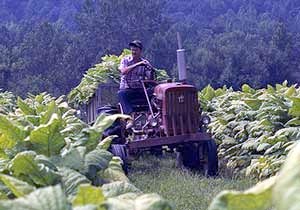Tobacco may be the plant we all love to hate, but researchers at the University of Western Ontario (UWO) in London have confirmed properties of tobacco that make it a potential natural alternative to traditional commercial pesticides. This potential as a pesticide can also provide tobacco farmers with another, more benign, use for their crops.
For centuries, gardeners have used home-made mixtures of tobacco and water, taking advantage of the presence of toxic nicotine in tobacco, as a natural pesticide to kill insect pests. Chemical engineering professor Cedric Briens and colleagues at UWO investigated these properties further.
The research team used a process called pyrolysis that heats tobacco leaves to a temperature of 500 degrees C (900 degrees F) in a vacuum. This process released a substance from tobacco called bio-oil, which they tested on various fungi, bacteria, and the Colorado Potato Beetle, an agricultural pest that has become resistant to many commercial pesticides. They found the bio-oil killed the beetles and blocked the growth of three other microorganisms damaging to agriculture in Canada, two types of bacteria and one fungus.
Even after removing the nicotine from the bio-oil, it still had an effect on the beetle. While the nicotine-free substance did not kill the beetle outright, it killed the pest’s appetite, which saved the plants from the beetle.
The results were published in the journal Industrial & Engineering Chemistry Research.


 RSS - Posts
RSS - Posts
the article was so interesting and i want to know more things about it…hope that you can give me a copy of the study and literature of nicotine spray…thanks it’ll be a great help for me
Emmanuel:
Thank you for visiting Science Business. You will need to get more information about the research from the lead author of the study, Cedric Briens. There is a link to his Web page in the post.